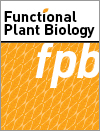Ever wondered why mangoes sometimes vary in size and quantity or why fruit trees produce a lot of fruit in one season followed by little fruit the next season? This paper delves into the hidden role of starch and sugars in the fruiting process. By revealing how these carbohydrates influence flowering, fruit growth, and more, we provide insights into achieving more reliable and higher-quality fruit production in the long run.
FP23195 Abstract | FP23195 Full Text | FP23195PDF (2.1 MB) Open Access Article





